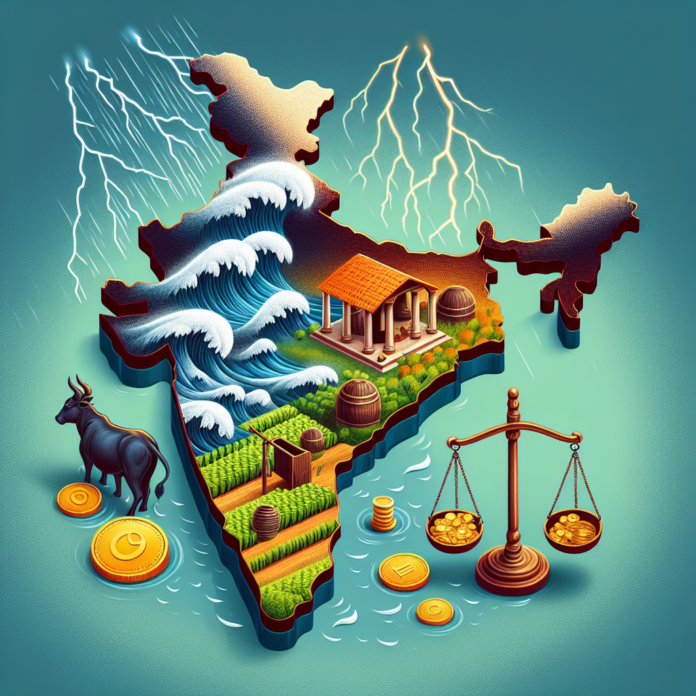Impact of Extreme Climate on India’s Economic Stability
“`html
How Extreme Climatic Conditions are Disrupting India’s Economy
India, known for its diverse climate and rich agricultural heritage, is increasingly facing the brunt of extreme climatic events. These disruptions are not only affecting the environment but also posing significant challenges to the country’s economy. From erratic monsoons to scorching heatwaves, the impacts of climate change are becoming more pronounced, necessitating urgent action.
Impact on Agriculture
Agriculture, which employs nearly half of India’s workforce, is particularly vulnerable to climate fluctuations. Unpredictable rainfall patterns and prolonged droughts have led to crop failures, significantly affecting food production and farmers’ incomes. For instance, the 2020 monsoon season saw an unusual delay, resulting in a drop in kharif crop yields. Farmers are left grappling with mounting debts, often leading to distress and, in the worst cases, suicides.
Threats to Water Resources
Extreme weather conditions have also exacerbated water scarcity issues across the country. Glacial retreats in the Himalayas and erratic rainfall have caused rivers to dry up, threatening the water supply for both agricultural and urban areas. States like Maharashtra and Karnataka have experienced severe droughts, impacting drinking water availability and agricultural irrigation, further straining local economies.
Health Risks and Economic Costs
Rising temperatures and increased humidity levels pose health risks, leading to heat-related illnesses and increased healthcare costs. Vulnerable populations, including low-income workers, are particularly at risk, which can reduce productivity and economic output. The economic burden of climate-related health issues is significant, with estimates suggesting that it could cost India billions of dollars in lost productivity and healthcare expenses.
Impact on Infrastructure
Extreme climatic events such as floods, cyclones, and heatwaves have a direct impact on infrastructure. Damage to roads, bridges, and buildings disrupts supply chains and leads to increased repair costs. The recent floods in Kerala and the cyclones in the Bay of Bengal are stark reminders of how natural disasters can cripple local economies and drive up insurance costs, affecting overall economic stability.
Rising Energy Demand
As temperatures soar, the demand for energy, particularly electricity for cooling, has increased significantly. This rising demand puts additional pressure on India’s power grid, which is already grappling with challenges like coal shortages and reliance on fossil fuels. Transitioning to renewable energy sources is crucial, but it requires substantial investment and policy support to be effective.
Government and Policy Responses
In response to these challenges, the Indian government has initiated various policies aimed at mitigating climate change and enhancing resilience. Programs focused on sustainable agriculture, water conservation, and renewable energy development are gaining traction. However, the implementation of these policies often faces bureaucratic hurdles and requires greater public awareness and participation.
Conclusion
The economic implications of extreme climatic conditions in India are profound and multifaceted. Addressing these challenges demands a comprehensive approach that includes sustainable practices, robust infrastructure, and proactive policy-making. As the impacts of climate change continue to escalate, the need for urgent and sustained action has never been more critical for safeguarding India’s economy and the livelihoods of its people.
“`


